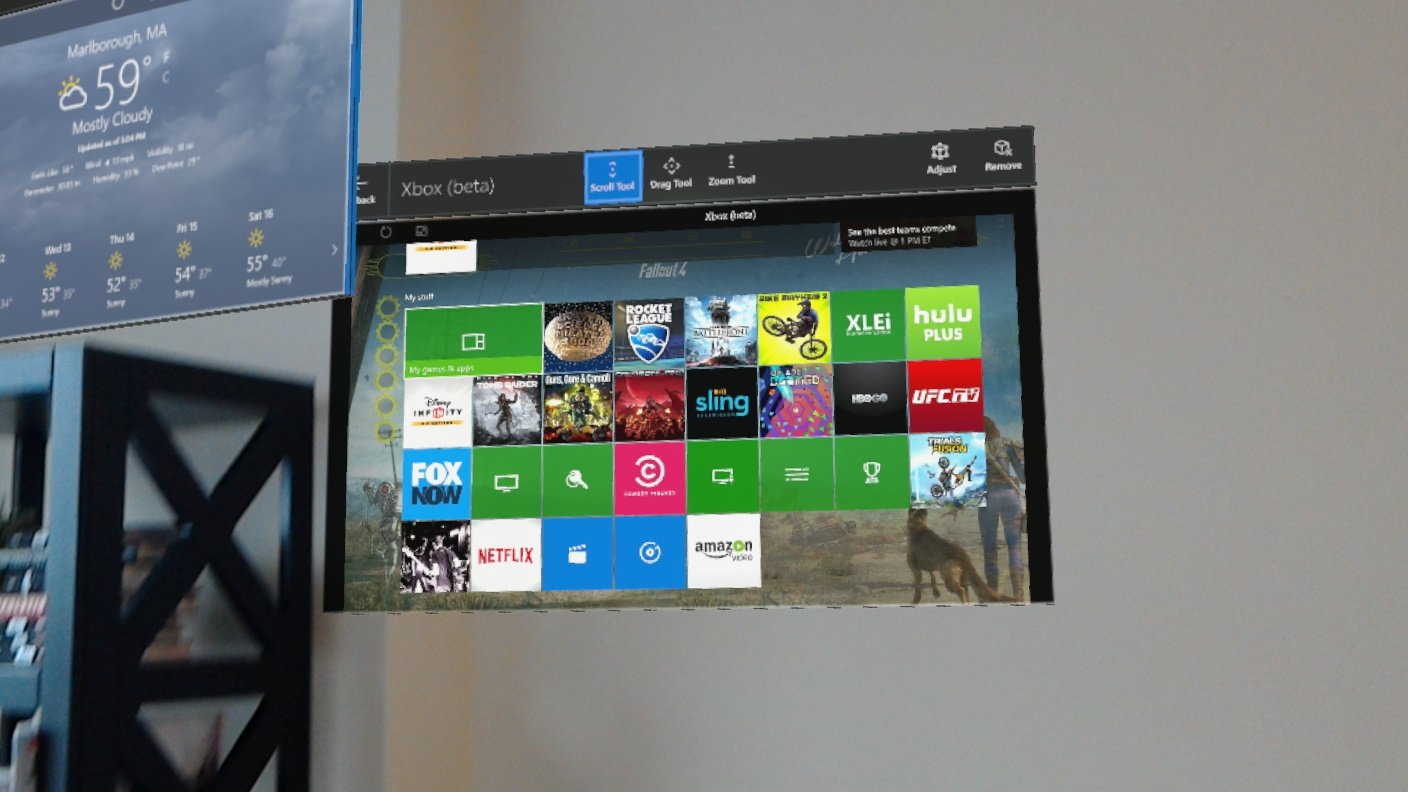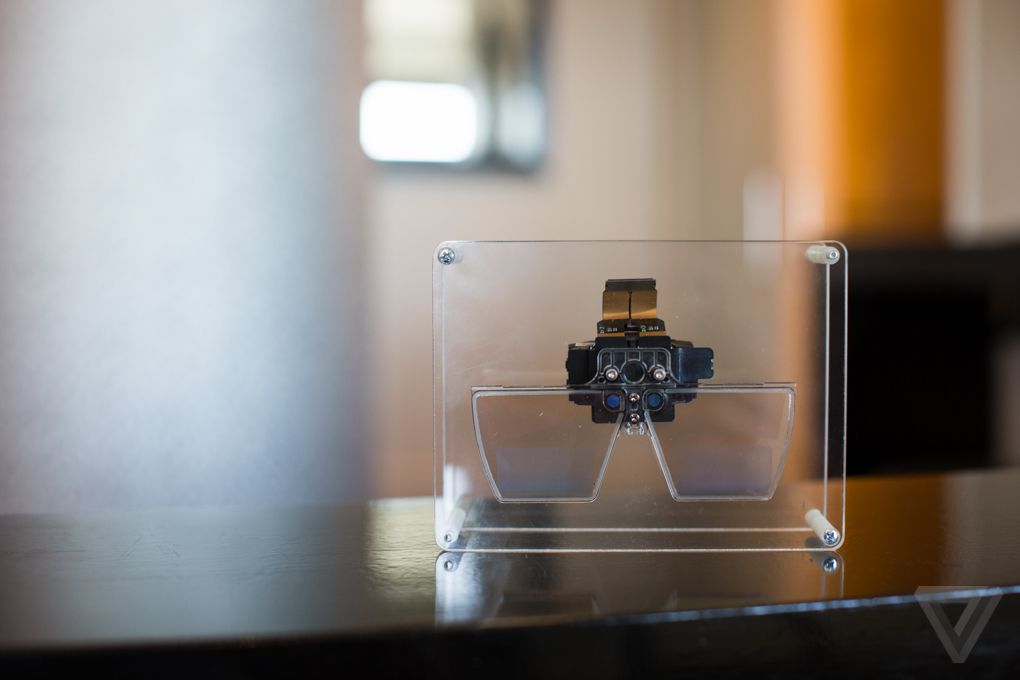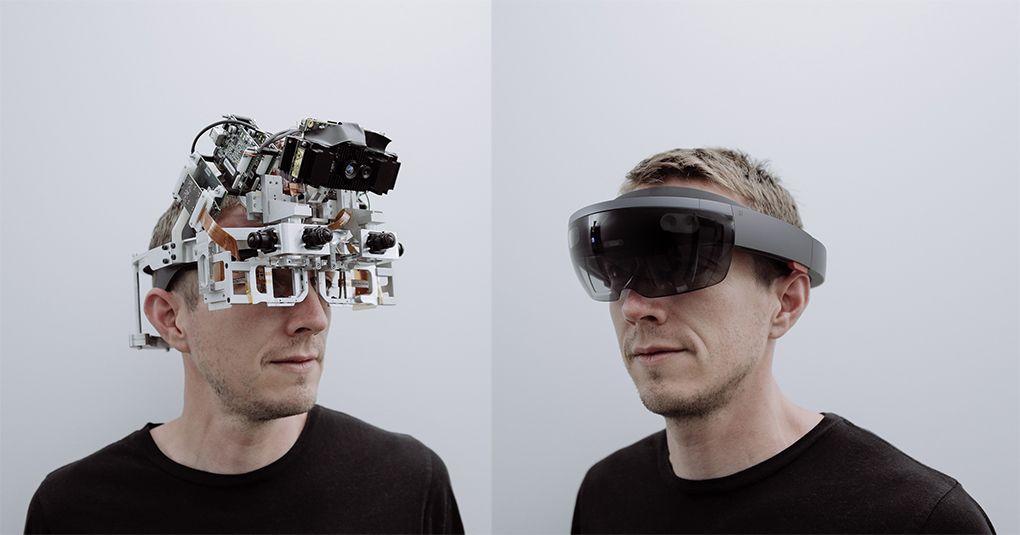You are using an out of date browser. It may not display this or other websites correctly.
You should upgrade or use an alternative browser.
You should upgrade or use an alternative browser.
Microsoft HoloLens [Virtual Reality, Augmented Reality, Holograms]
The fact the image is additive is really bothersome to me. eg. The holes made in that vid have glowing cracks because you can't draw draw dark cracks. Which means all design will be around everything glowing, I guess.
D
Deleted member 86764
Guest
I like how you're able to get a correct perspective through the holes in the wall. Turning your head looks like it effects the view. Nice.
FOV is awful but I imagine they'd be quite an easy fix for consumer versions.
Dunno whether it's because it's being filmed through an iPhone or whether it's a problem with the display, but those colours look very strange. It's like the hole is phasing between R, G, and B. Maybe when moving some of the colours are displaying for longer than others? Looks weird anyway.
Definitely a way off being ready for the market though.
Edit: colours displaying at different rates? Sorry for the screen shot from my phone.

FOV is awful but I imagine they'd be quite an easy fix for consumer versions.
Dunno whether it's because it's being filmed through an iPhone or whether it's a problem with the display, but those colours look very strange. It's like the hole is phasing between R, G, and B. Maybe when moving some of the colours are displaying for longer than others? Looks weird anyway.
Definitely a way off being ready for the market though.
Edit: colours displaying at different rates? Sorry for the screen shot from my phone.

Last edited by a moderator:
Somebody has streamed Xbox One games to the HoloLens...

http://www.windowscentral.com/you-can-stream-xbox-one-games-hololens
Tommy McClain

http://www.windowscentral.com/you-can-stream-xbox-one-games-hololens
Tommy McClain
Why? As discussed in this thread, the projection tech (as we understand it) is fundamentally limited in FOV. Fixing that is likely anything but easy.FOV is awful but I imagine they'd be quite an easy fix for consumer versions.
D
Deleted member 86764
Guest
You're saying it's a projected image onto the insides of the glasses? I would have thought that the light would pass straight through the lens... maybe that's why they're dark lenses.Why? As discussed in this thread, the projection tech (as we understand it) is fundamentally limited in FOV. Fixing that is likely anything but easy.
Anyway, I'd really hope they're able to increase the FOV coz that looks horrible.
Sent from my SM-G935F using Tapatalk
It's like the hole is phasing between R, G, and B. Maybe when moving some of the colours are displaying for longer than others? Looks weird anyway.
They're probably using sequential RGB via DLP or LCoS to feed their waveguides, in which case there's potential for component separation under certain types of motion. It's a pretty big limitation when you want to do things like low persistence because you're actually making use of the full scan cycle in order to blend the RGB on the retina.
edit:
Oh, and I think that video looks way cooler than any of the faked stuff they've demoed thus far. A shame that it's taken this long to see it for real.
D
Deleted member 86764
Guest
Looking at this image I wonder whether it's actually using a transparent display technology

Something like this?:
http://www.planar.com/products/transparent-displays/
Sent from my SM-G935F using Tapatalk

Something like this?:
http://www.planar.com/products/transparent-displays/
Sent from my SM-G935F using Tapatalk
D
Deleted member 86764
Guest
It's also possible that the iPhone video is actually filmed at further from the display than the eyes would normally be. That would make the FOV appear worse than it is.
I don't imagine an iPhone has a great aperture which would allow for a wider focal range in low light. So to compensate, the phone would need to be held further away.
Sent from my SM-G935F using Tapatalk
I don't imagine an iPhone has a great aperture which would allow for a wider focal range in low light. So to compensate, the phone would need to be held further away.
Sent from my SM-G935F using Tapatalk
Phone cameras have wide apertures and wide angles. You need to hold them close to avoid perspective making things tiny.
D
Deleted member 86764
Guest
Wider focal range is different to a wide aperture. To get a wide focal range you need a narrow (or tight) aperture.Phone cameras have wide apertures and wide angles. You need to hold them close to avoid perspective making things tiny.
Edit: and more light (otherwise the image would be too dark).
Sent from my SM-G935F using Tapatalk
Looking at this image I wonder whether it's actually using a transparent display technology
This would work if the panel were sufficiently far away from the eyes to be in a similar focus plane as everything else you're viewing through it. With a VR HMD you are able to throw a simple lens that effects the focus of everything, with an AR HMD you have to ensure that the light being emitted is already focused before it's eventually redirected to the eyes.
D
Deleted member 86764
Guest
Yes, that makes sense. And you're saying a projected image would solve that problem?This would work if the panel were sufficiently far away from the eyes to be in a similar focus plane as everything else you're viewing through it. With a VR HMD you are able to throw a simple lens that effects the focus of everything, with an AR HMD you have to ensure that the light being emitted is already focused before it's eventually redirected to the eyes.
You can definitely see a slight colour difference in the lower part of that photo. Which I guess could be for the projection or the transparent display.
Sent from my SM-G935F using Tapatalk
Last edited by a moderator:
Anyway, I'd really hope they're able to increase the FOV coz that looks horrible.
MS already said there won't be much change in the FoV;
http://www.theverge.com/2015/6/18/8809323/microsoft-hololens-field-of-view-kudo-tsunoda
Similar threads
- Replies
- 1
- Views
- 274

/cdn0.vox-cdn.com/uploads/chorus_asset/file/6296633/hololensteardown-13.0.jpg)
/cdn0.vox-cdn.com/uploads/chorus_asset/file/6296635/hololensteardown-1.0.jpg)

